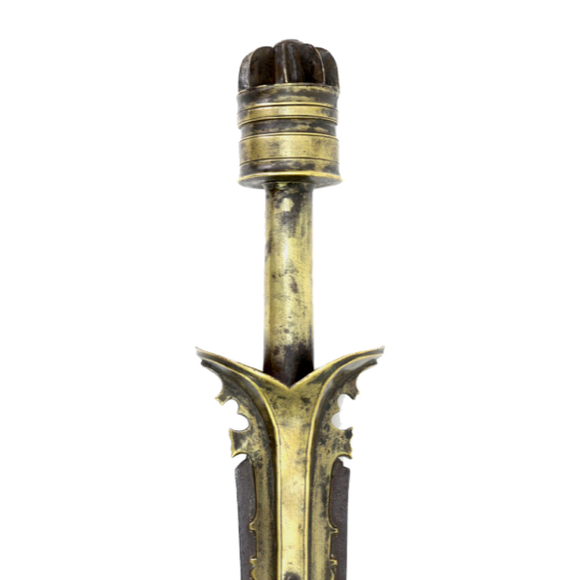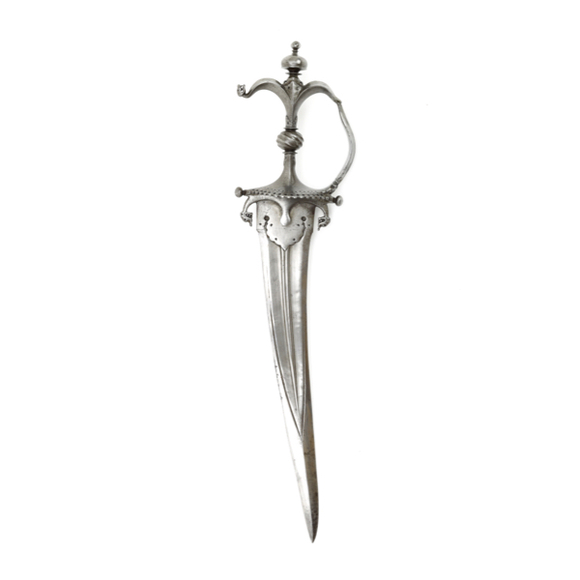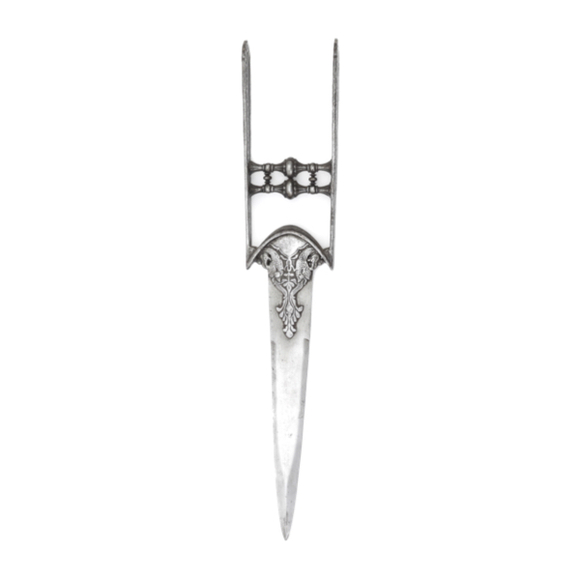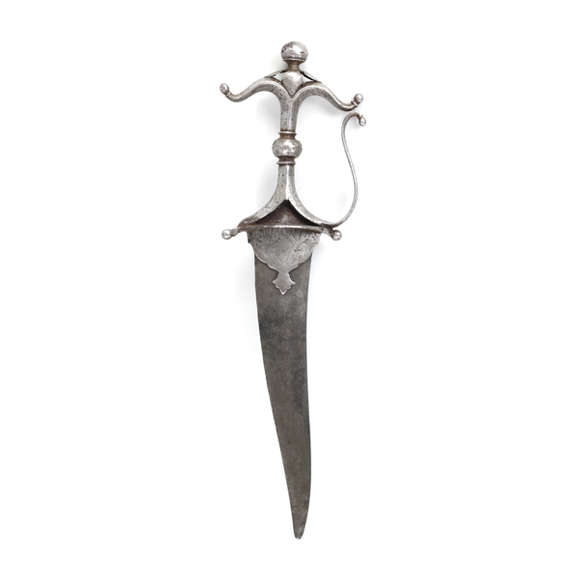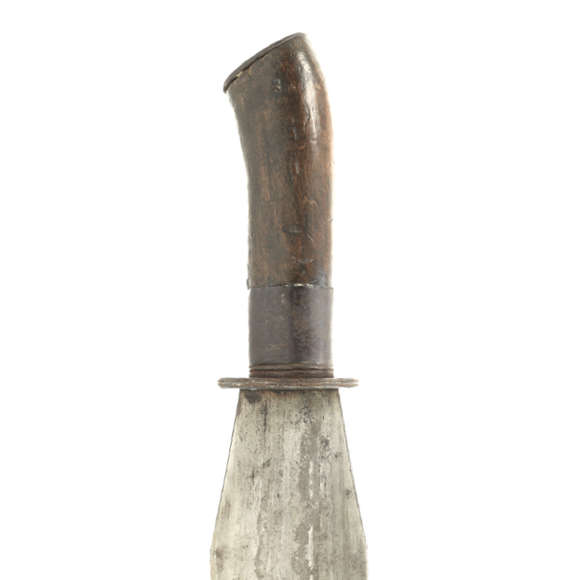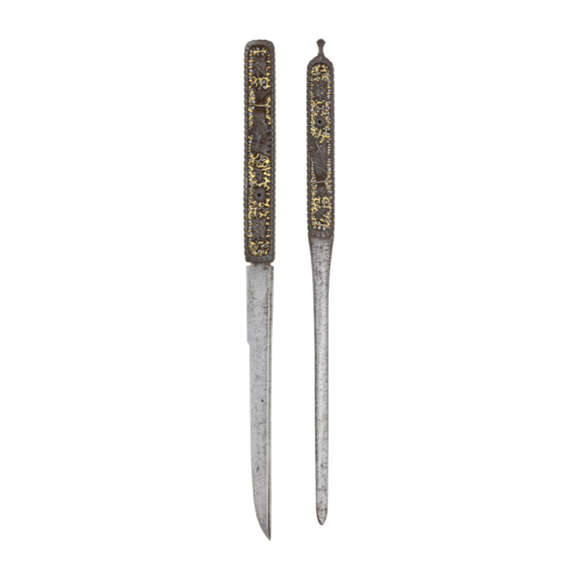An early fighting piece with strong reinforcing langet and broad, cobra shaped tip.

74 cm
56 cm
Steel, iron, brass
Kerala, South India
17th - 18th century
European antique art market
Historical context
This peculiar type of sword was used in India for many centuries. Scholars have proposed that the general blade design may have been inspired by the Greek machaira sword that was brought into the area by Alexander the Great.1

Iron machaira or kopis sword
5th–4th century B.C.
Metropolitan Museum accession number 2001.346
Increased (maritime) trade and Muslim armies pressing down from the north introduced more conventional curved sabers into India which gradually replaced this style. They remained in use the longest in South India, where an alliance of Hindu kingdoms under the Vijayanagara Empire had long been able to resist the Muslim invaders until they, too, fell in the 16th century. Early Western accounts associate these swords especially with the Nayar, (also known as Nair), a group of Hindu warrior castes of Kerala, South India, who were among the last to use them in fighting.
They may have lost practical relevance but remained in ritual use in Theyyam dance rituals in Kerala, and Bhuta Kola animist spirit worship in Karnataka. Some antique ritual swords are even kept in use until this day.

An antique bronze sword in use at a contemporary Theyyam ritual.
Photo by Dhruvaraj S.
This example
A fine example of the 17th or 18th century. This iteration of the design is purely ceremonial; the blade is thin and flexible, meant to vibrate, and the pommel is full of metal jingles that make a ringing sound to add to the spectacle.
Its most striking element is the cast brass guard with four circular ornaments, chakram, each different and carefully chiseled, and the two long langets that hold the blade, reinforced with pierced scrollwork. The pommel consists of a series of discs, four of which hold jingles, and a ribbed pommel nut.

The four different chakram on this sword's guard.
Each individually carved, after casting.
Philip Rawson, a notable scholar on the Indian sword, coined the term “Nayar flamboyant sword” for these, which has remained in use since. They are thought to represent a nostalgia for the good old days of Nayar military height of centuries past.2
Importance
This sword is a very ornate example in a rarely encountered style, exhibiting a much higher level of complexity in design than usually encountered on these swords. I am not aware of any direct comparables in museums or collections in the Western world.
There is one with comparable work on the brass langets in the Government Museum, Chennai, inventory number 2057. Dr. Robert Elgood dates this piece to the 14th to early 15th century. I believe ours probably dates from the 17th to - early 18th century.3
3D imaging

References
1. Philip Rawson; The Indian Sword. Arco Pub. Co. 1969.
2. Ibid.
3. Robert Elgood; Hindu arms & ritual. Delft, Eburon Academic Publishers, 2004. Page 83. Government Museum, Chennai, inventory number 2057.


















Of a style often associated with Tanjore, the seat of the Vijayanagara empire.
Somewhat worn but once very high-quality, with great sculptural qualities and remains of silver "true…
The only set of its type known to me in both private and museum collections.

